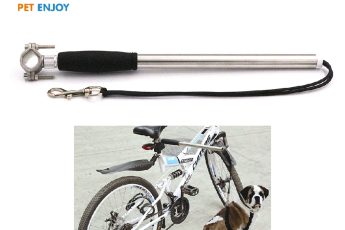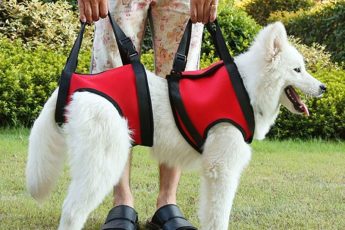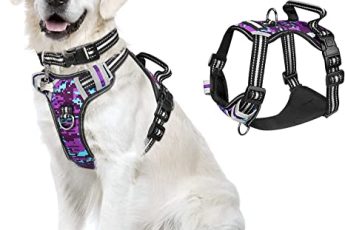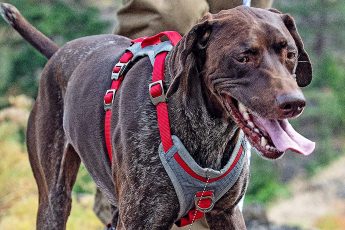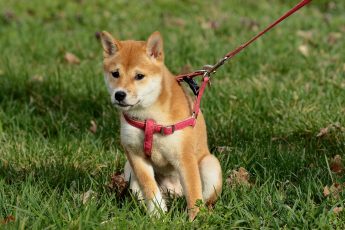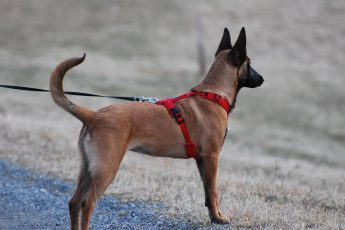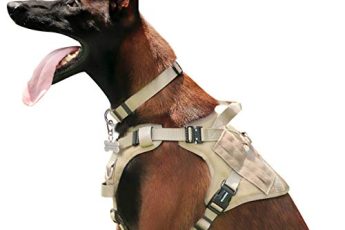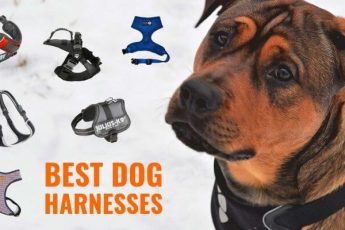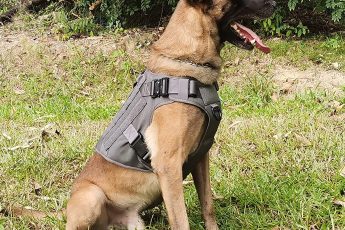Is it safe to lift a dog by its harness? How do you use a dog harness with handle for lifting? What’s the best one for a senior dog? And is a harness better than a collar when your dog pulls? Let us answer these questions in this article. Continue reading to learn about the benefits of a dog lifting harness. Listed below are some tips to make your life easier when lifting a dog.
Can you lift a dog by the harness?
Lifting a dog by the harness is an effective way to help them up the stairs. First, lift the harness handle, not the dog itself. It is important to avoid lifting the dog off the ground. Instead, proceed slowly and hold onto a handrail. Once you have lifted the harness handle, slowly climb up the stairs with the dog. This will make the process more enjoyable for both you and your dog.
There are many different types of lift harnesses available, each designed to help with different tasks. Some are specifically made for certain areas, while others are more versatile. You will need to determine what areas your dog needs help with to ensure the harness fits properly. For example, a full body lift will be easier for a small dog than a larger one. But, be sure to check if your dog is overweight before you begin using a harness for full body lifting.
What is the best dog lifting harness?

There are many different types of lifting harnesses on the market, and the one you choose will depend on your dog’s needs. A lifting harness will provide additional support for your pup, allowing you to move more freely. Depending on your pup’s size and age, you may need a different type than what comes with the kit. A lifting harness may help you with everyday activities, such as walking the dog, but it is also helpful if your dog has joint issues or is injured.
The straps and handles should be comfortable and long enough to cover the abdomen area. They should be soft but not uncomfortable, and the straps should be adjustable to ensure that your dog won’t slip or become irritated. You can also adjust the length of the harness based on your dog’s measurements. The straps of your dog’s lifting harness should be wide enough to prevent your dog from slipping around when being lifted.
Is a collar or harness better for dog that pulls?
Both collars and harnesses are useful for controlling a dog that pulls. They can be tricky to put on, especially for nervous dogs. To help your dog associate the harness with positive feelings, you can use treats to motivate them to wear it. Every dog should wear a collar, for identification purposes. Harnesses, however, can help you train your dog more effectively and give you more control. Collars with leashes are also an option.
Although a harness is a great option for a dog that pulls, it doesn’t work for every type of wild dog. A collar can lead to neck injuries and choking, and some dog breeds can be sensitive to its collar. Furthermore, studies have shown that dogs that pull are more likely to develop thyroid disease than those that don’t. For these reasons, harnesses are the best option.
How do you lift a senior dog?
Whether it’s hip dysplasia or recent surgery, a senior dog may require some assistance when it comes to moving around. Using a dog lift harness can ease the burden on the aging dog’s back, hips and legs, and help them maintain the healing process. Adding to the benefits of using a dog lift harness, it can make travel a more comfortable and safe experience.
If the dog is very large, you will probably have to bend their knees to lift them. Then, wrap one arm around their chest while supporting their rump. While this may seem counterintuitive, it is the right method for many people. A dog harness with a handle makes it easier to carry large dogs, while keeping your hands free for other activities. Those who are physically challenged may not be comfortable lifting a large dog.
How do you make a dog lifter?
A dog lifter harness is useful for a variety of situations. They can be used for walks and to help the dog climb into its crate. These straps attach to the dog’s chest and hips. Some of these harnesses have metal handles attached to the top, which gives the dog assistance when walking or transferring from the crate to the house. The handle allows the dog to be easily lifted and lowered without the need to exert too much pressure.
A homemade dog lifter harness is an inexpensive way to help your disabled or elderly pet. Look for a dog harness with a “BASIC” neck shape, with two shoulder straps for the dog to hold on to. The neck shape should be made from a stretchy fabric that won’t impair the airway of the animal. Depending on the size and shape of the dog, you may have to modify the design a bit to accommodate the size of the animal.

How a Dog Harness With a Handle For Lifting Can Help You Lift Your Large Dog
A dog harness with a handle for lifting is a helpful item to have when you need to lift your large dog. Many dogs need a little help with stairs, so you’ll need to find a solution that can make the process easier for both of you. Before you do anything, however, make sure to lift the harness handle rather than pulling the animal up. If you must carry your dog, do so slowly and grip a handrail.
How can I help my dogs back legs?
Dogs with weak back legs may find it difficult to walk. A dog harness with a handle for lifting can support the back legs and allow your pet to walk normally. Our top pick for a dog harness with a handle for lifting is the GingerLead Support Harness, which features a built-in leash and comfortable padding. It is also less likely to bunch up and is machine washable.
How do you carry a 100 pound dog?
If you’re worried about picking up a hundred-pound dog, a harness with a handle for lifting can help you. You should first learn how to pick up a large dog by bending the dog’s knees and placing your right hand across its chest. Then, support the dog’s rump with your other arm. If you’re carrying a small dog, you can try to make the task easier by introducing the command and using the same cue each time you pick up your dog.
It can be tricky to lift a dog by the underarms. Not only is this painful for the dog, but it also causes stress on muscles and makes the dog afraid of being lifted. In addition, many dogs are afraid of being lifted and this is a temperament test. A better approach is to put a strong arm under the dog’s chest and wrap it around its belly.
What is a quick lift sling for dogs?
While the name sounds like it should be simple, a quick lift harness can be quite confusing to use. You have to get your dog to cooperate and be compliant, but once the harness is on, it fits your dog well. The sling has 5 adjustment points and gives your dog support where it needs it most. Its straps are designed not to pinch or irritate your dog. If your dog is overweight, consider purchasing a harness that has extra padding for comfort.
A dog lift harness should provide comfort and support, so look for extra padding. The material should be soft but sturdy. Make sure the straps are adjustable to avoid back strain while lifting a large dog. Second-hand harnesses should be strong and sturdy, as failed straps or buckles can cause further injury to your dog. Always check the manufacturer’s warranty. If you are not satisfied, you can return it.
How can I get my dog to ride in the car?
If your dog is nervous about the car, you may want to reward it with a high-value treat if it gets into the car. Try giving it a treat every time it jumps into the car. The more it enjoys the ride, the more likely it will want to stay in the car. Once you have established this relationship, you can try letting your dog get into the car without having to use force.
Start with short car trips. Take your dog to places he enjoys, such as parks or the beach. Praise him while you drive, and use cheerful banter to reward him for being a good passenger. If possible, enlist a helper to give him treats as you go along. Choose destinations that your dog will enjoy. It might be a fun trip to the grocery store or a local park.
Are harnesses bad for dogs shoulders?
Dogs can experience problems with their shoulders when they are wearing a collar, which puts pressure on their neck. Harnesses with handles steer clear of the neck and avoid pressure points that can lead to musculoskeletal problems. They can also allow owners to keep a closer eye on their pets. The straps of a harness can also be adjustable, so owners can choose the type that best suits their dog’s size and personality.
Depending on your dog’s leg strength and function, a lifting harness can provide significant support. The right harness is comfortable for your dog and will last throughout the rehabilitation process. A lift harness can provide great support for dogs with weak hind legs, poor balance, or a limited range of motion. While they may not be ideal for all dogs, they can be an excellent choice for large breeds with joint pain.

